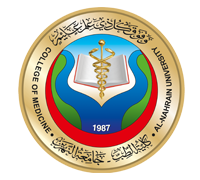|
Vol. 8 Issue 2 April - June / 2010
Published on website | Date : 2016-05-19 08:54:56
RELATIONSHIP OF PERIPHERAL BLOOD LYMPHOCYTES IMMUNE ALTERATION PHENOTYPE TO DISEASE ACTIVITY IN RHEUMATOID ARTHRITIS PATIENTSHayder F. Ghazi, Abdul-Razak H. AhmadAbstractBackground: Rheumatoid arthritis (RA) is a systemic autoimmune disorder causing synovitis of diarthroidal joints in which activated T-lymphocytes has a prominent position in RA pathology and may be important in prediction of disease outcome.
Objective: To evaluate cellular expression of certain activation marker on PBLs and their relevance to disease activity pattern of RA patients. Patients and methods: this study included forty six RA patients, seven patients with Osteo-arthritis (OA) and 10 apparently healthy individuals. The collection of our baseline data based on routine laboratory and clinical assessment of disease activity Score (DAS). Blood sample was taken from each subject in all groups, at the time of attendance. Lymphocytes were separated; slides were prepared fixed on charged slides, foiled, and kept at -20ºC until assayed. CD3 and CD54 expression was detected using Immunocytochemistry staining, while CD71was detected using direct immunoflouresence staining. Results: The results of CD3 and CD54 revealed a statistically higher percentage of expression in rheumatoid arthritis patients when compared with that of the apparently healthy and OA control groups. The CD71 showed statistically significant higher expression in minimum disease activity group without any correlation with clinical and laboratory disease activity indices. Conclusions: we provide further evidence of a T-cell differentiation defect in RA, which could explain some of the well-characterized immunologic features of the disease but it is not related to the disease activity state. Keywords: Rheumatoid arthritis, disease activity, lymphocytes activation, immunocytochemistry, immunofluorescence and CD marker. Full-text |
Some tools below are only available to our subscribers or users with an online account |
 |
Please wait until the current process completes ... |



